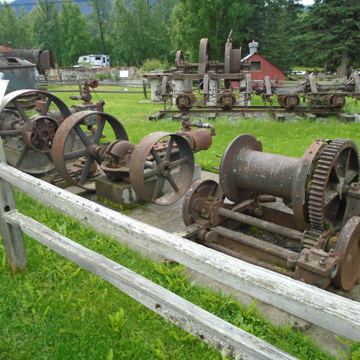The coalfields around Sutton were initially developed by the U.S. government, which
Although the landscape has been irrevocably altered, few buildings remain to remind visitors of the life that went on at these mines. The Alpine Heritage and Cultural Center is built around the enormous concrete foundations for the coal washing plant, built by the Alaska Engineering Commission and the Navy Alaskan Coal Commission in 1921–1922. The original buildings consisted of an 86-foot-by-132-foot washer and a 70-foot-by-80-foot power plant; they operated for only two weeks before the navy closed them down. Also at the center are several pieces of coalmining equipment, including boilers, hoists. steam engines, tramcars, a washer, and a dryer. There are two one-room buildings at the center, both moved from other sites.






















